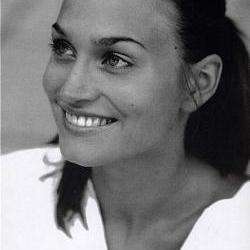If you didn’t read the fine print, you would have been very surprised by the first notes of the overture. This “other Barbiere”, composed by Giovanni Paisiello for St Petersburg in 1783 is not a work that has remained in the repertoire, but before Rossini’s more comic version slowly but surely routed it from the repertoire, it enjoyed a 21 year run in Vienna – around 100 performances. Like Rossini’s version, Paisiello’s is based on the Beaumarchais play Le Barbier de Séville.
Paisiello’s version follows the play more closely than Rossini, paying significantly more attention to the relationships between Dr Bartolo and his ward, Rosina, and to the pursuits of Count Almaviva, whereas Rossini focuses much more on the comic antics of Figaro. But there are many similarities, and at times one can be certain that there was a healthy “awareness” of the work by contemporaries who went into composition a l’époque. Not only are the character voice types nearly identical – Rosina a coloratura (soprano or mezzo) with impossible range, Almaviva/Lindoro a tenor, and the rest of the cast a flurry of baritones and basses. Figaro’s wordy “Scorsi già molti paesi” definitely inspired Rossini’s “Largo al factotum” but itself bears a certain resemblance to Mozart’s Catalogue Aria from Don Giovanni. Moreover, Don Basilio’s major aria “La calunnia, mio signore” is, in Paisiello’s version, similar to Rossini’s “La calunnia è un venticello” in many more ways than just textual. All this is not to indicate that Paisiello’s version has been unjustly dropped from the repertoire; it’s humour takes much more effort to get across than Rossini’s and it is completely understandable that despite the loud and scandalous protests from Paisiello's supporters at the Rossini première, the stronger version has withstood the test of time.
Thank heavens that the team of Moshe Leiser and Patrice Caurier, as well as an incredibly engaged team of singers, did such a marvellous job of squeezing this work for every drop of comedy it has to offer. There were brilliantly funny moments: Almaviva sings his serenade to Rosina while Figaro strains to hold him up in the air; the trio involving the sick help (including a cross-dressing baritone) “Ah! Ah! Ah!” is hysterical; and Bartolo’s serenade to Rosina “Vuoi tu, Rosina” made his character nearly likable – and very much laughable.
Pietro Spagnoli (Bartolo) made his mark thoroughly throughout the evening with his rich timbre, the roundness of his voice belying the general flatness written into his character; a wonderful performance. While Topi Lehtipuu’s (Almaviva) tenor might not be everyone’s cup of tea, he is astonishingly charming as he seduces Rosina in front of her sleeping chaperone, a very funny fall-down drunk, and an imperious leader as he informs Bartolo of his fall from grace and of the futility of all his “useless precaution”; and all of this while singing more notes than anyone would care to count over the course of three hours.
Likewise, huge respect for Mari Eriksmoen (Rosina). She deals with insane coloratura as neatly as she fits into her 1940s kitten heels and pink cardigan (costumes by Agostino Cavalca), and inhabits her somewhat limited character of frustrated damsel in distress with great energy and aplomb. I was so sad to not hear more of Andrè Schuen (Figaro) who frankly I could listen to all day long. What a voice! Bass Fulvio Bettini was a wonderful, money-grubbing Don Basilio, Erik Armen an infectious “Giovenetta” and young ensemble member Christoph Seidl an imposing Notary possessing vocal and physical maturity beyond his years.
The musical success of the evening was also due to the wonderful Freiburger Barockorchester, led by René Jacobs, who graced our ears with outstanding attention to phrasing and sound, but also with exactly the sort of vigour and brilliance that I imagine kept this work at the top of the late 18th century charts for over two decades. And thank you as well to Christian Fenouillat (stage design) and Christophe Forey (lighting). While some will certainly complain that a 1940s setting is unimaginative, this unassuming setting (with very tasteful lighting) underscored the elements of entrapment and distance inherent in the story and allowed the music and the comedy inherent in the work to speak. Bravo, Theater an der Wien, and bravi tutti!




